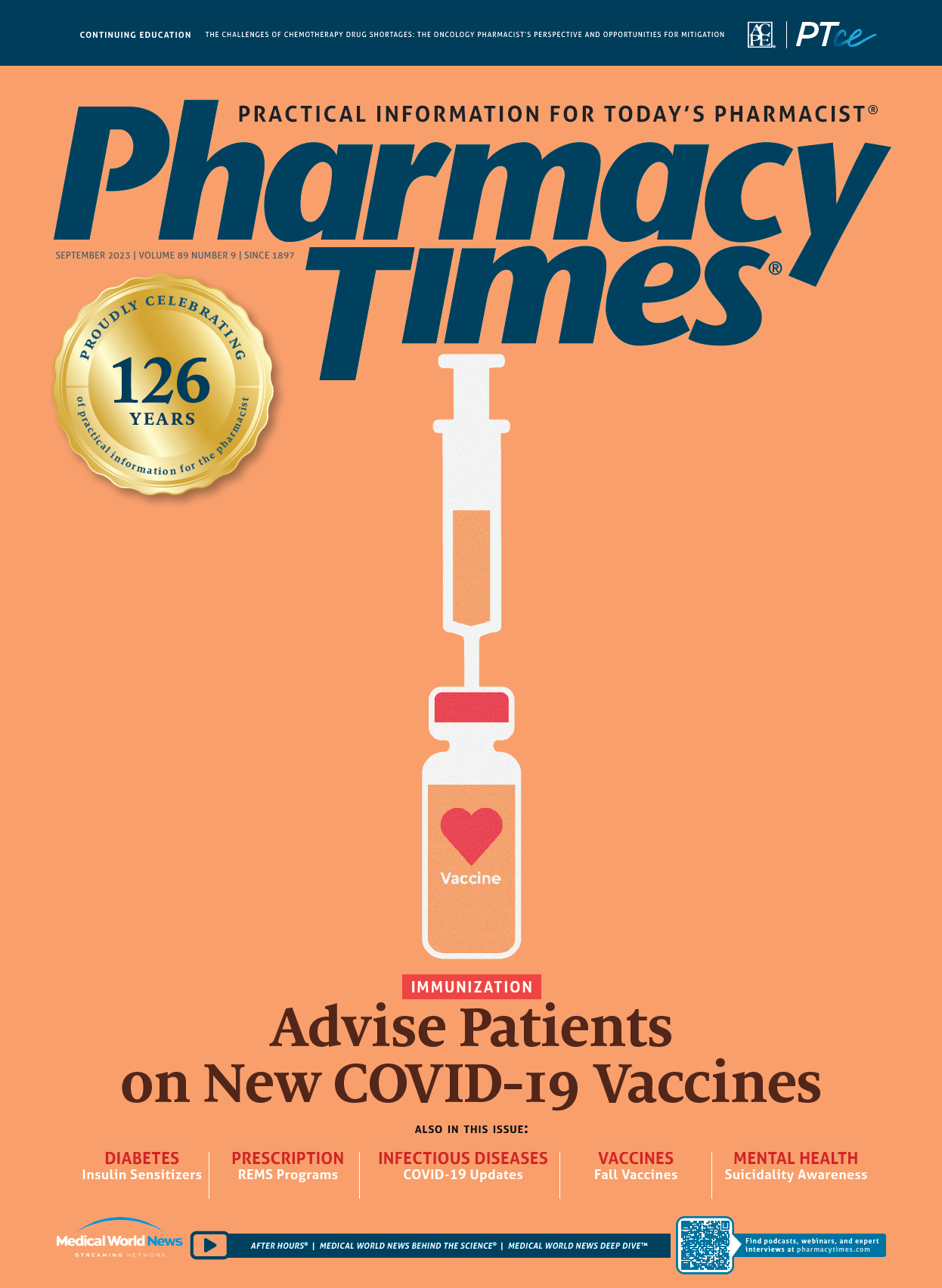News
Article
Pharmacy Times
Insulin Sensitizers May Be Making a Comeback
Author(s):
Researchers have identified new uses for insulin sensitizers, including in the treatment of polycystic ovary syndrome and infertility.
The number of FDA-approved diabetes drugs to lower blood sugar is growing rapidly, with varying mechanisms of action. Among the choices, the 2 classes of antidiabetic drugs that are insulin sensitizers—the biguanides and thiazolidinediones (TZDs)—are unique.
Man injecting insulin | Syda Productions | stock.adobe.com

Biguanides
Metformin, an effective and inexpensive first-line treatment for type 2 diabetes (T2D), is currently the only available drug in this class. Metformin lowers basal and postprandial plasma glucose, decreases hepatic glucose production, decreases intestinal glucose absorption, and improves insulin sensitivity by increasing peripheral glucose uptake and utilization. It is not associated with hypoglycemia or hyperinsulinemia. Unlike with some antidiabetic agents, patients who take metformin do not tend to gain weight.1
The labeling for metformin indicates that it is contraindicated in patients with advanced kidney disease or type 1 diabetes (T1D).1 Pharmacists should note that several recent studies have found that when used in adolescents and adults with T1D, cardiovascular and cerebrovascular risk factors improved, as did insulin sensitivity.2-4 Its use in T1D may increase in the future but is currently off-label.1
Metformin is available as immediate-release tablets administered twice daily, extended-release tablets administered once daily, and an oral solution.1 The most common adverse effects (AEs) include diarrhea, nausea, vomiting, and gastrointestinal pain. Metformin has a boxed warning for lactic acidosis.
Pharmacists should counsel patients that adverse effects generally improve as the body adjusts to the medicine, but they can linger. Taking metformin with food or switching to extended-release tablets may help.1
Thiazolidinediones
TZDs include pioglitazone (Actos; Takeda Pharmaceuticals) and rosiglitazone (Avandia; GlaxoSmithKline), which enhance insulin activity and reverse the insulin resistance that often accompanies T2D.5 TZDs are ligands for peroxisomal proliferator–activated receptor γ (PPARγ), a nuclear receptor superfamily member and a transcription factor that concentrates in adipose tissues.6 PPARγ modulates the insulin-responsive glucose transporter GLUT4, which is crucial for glucose uptake and metabolism in insulin target tissues.7 Thus, TZDs operate in intracellular metabolic pathways to improve glucose transport activity, enhance glycogen synthesis, and stimulate insulin-mediated glucose uptake and disposal in skeletal muscle tissue.8 Subsequently, TZDs improve endogenous insulin’s action and increase critical tissues’ insulin sensitivity.9
Pioglitazone dosage starts at 15 mg and can be titrated up to 30 mg to 45 mg as needed and tolerated. Rosiglitazone dosage is 4 mg to 8 mg either once or twice daily.
Despite the proven benefits of this class for glycemic control, clinicians have tended to choose other medications because of TZD’s AEs, such as edema and weight gain. Potentially serious AEs include elevated risk for heart failure—meaning a history of congestive heart failure is a contraindication—and fractures.
Despite these concerns, pioglitazone’s AEs diminish if low doses are added to insulin therapy, and it is considered a suitable, cost-effective strategy in patients with limited access to care compared with larger insulin doses.9,10 Studies have shown that pioglitazone administration in combination with insulin therapy improves glycemic control, reduces insulin dose requirements, and improves lipid profiles.11 The combination also significantly improves hemoglobin A1C and fasting plasma glucose in patients with T2D.12 The combination can potentially simplify treatment, lower doses of insulin, and improve glycemic control.
Both TZDs decrease plasma triglycerides and transform small, dense low-density lipoprotein (LDL) particles to larger and less dense LDL particles, leading to some correction of dyslipidemia and lowered risk of cardiovascular complications.13 Additionally, 2 large prospective clinical trials found that the enhanced insulin sensitivity produced by pioglitazone reduced cardiovascular incidents.14
The Hyperinsulinemia Conundrum
If insulin resistance is severe, patients may need insulin dosages exceeding 2 units/kg of body weight or 200 units/ day. Regardless, many patients may fail to reach glycemic targets. Continuously elevated insulin levels can partially downregulate insulin signaling.15
As insulin resistance increases and clinicians dose escalate insulin to compensate, hyperinsulinemia can occur. Hyperinsulinemia, considered a marker of insulin resistance subsequent to impaired transduction of insulin signals, is common in T2D and is often linked to metabolic syndrome.5,14 It has been associated with an increased risk of cardiovascular disease in patients with T2D.13,15 Aggressive insulin therapy in patients with T2D creates concerns about hypoglycemia and weight gain.9 Pioglitazone reduces hyperinsulinemia characteristic of insulin-resistant states.16
The Figure 17,18 shows how continuous insulin dose escalation in patients with uncontrolled diabetes can lead to insulin resistance.

When selecting medications to treat T2D, prescribers should (but don’t always) consider cost-effectiveness, insurance coverage, and previous medications that worked or did not work. Pharmacists can help patients manage these concerns and answer their questions.
Conclusion
As researchers better understand the causes and effects of insulin resistance, insulin-sensitizing drugs are being used in different ways. Pharmacists will see insulinsensitizing drugs used to treat polycystic ovary syndrome and infertility.19 They may also see them used in T1D. It is critical to stay abreast of research into the insulinsensitizing drugs because they appear to be moving toward the forefront of treatment again.
References
- Glucophage (metformin). Prescribing information. Bristol-Myers Squibb Company; April 2017. Accessed July 15, 2023. https://www.accessdata.fda.gov/drugsatfda_docs/label/2017/020357s037s039,021202s021s023lbl.pdf
- Xu L, Wang W, Song W. A combination of metformin and insulin improve cardiovascular and cerebrovascular risk factors in individuals with type 1 diabetes mellitus. Diabetes Res Clin Pract. 2022;191:110073. doi:10.1016/j.diabres.2022.110073
- Bjornstad P, Schäfer M, Truong U, et al. Metformin improves insulin sensitivity and vascular health in youth with type 1 diabetes mellitus. Circulation. 2018;138(25):2895-2907. doi:10.1161/CIRCULATIONAHA.118.035525
- Cree-Green M, Bergman BC, Cengiz E, et al. Metformin improves peripheral insulin sensitivity in youth with type 1 diabetes. J Clin Endocrinol Metab. 2019;104(8):3265-3278. doi:10.1210/jc.2019-00129
- Ribon V, Johnson JH, Camp HS, Saltiel AR. Thiazolidinediones and insulin resistance: peroxisome proliferatoractivated receptor gamma activation stimulates expression of the CAP gene. Proc Natl Acad Sci USA. 1998;95:14,751-14,756. doi:10.1073/pnas.95.25.14751
- Tyagi S, Gupta P, Saini AS, Kaushal C, Sharma S. The peroxisome proliferator-activated receptor: A family of nuclear receptors role in various diseases. J Adv Pharm Technol Res. 2011;2(4):236-240. doi:10.4103/2231-4040.90879
- Leonardini A, Laviola L, Perrini S, Natalicchio A, Giorgino F. Cross-talk between PPARgamma and insulin signaling and modulation of insulin sensitivity. PPAR Res. 2009;818945. doi:10.1155/2009/818945
- Zangeneh F, Kudva YC, Basu A. Insulin sensitizers. Mayo Clin Proc. 2003;78(4):471-479. doi:10.4065/78.4.471
- Yamanouchi T. Concomitant therapy with pioglitazone and insulin for the treatment of type 2 diabetes. Vasc Health Risk Manag. 2010;6:189-197. doi:10.2147/vhrm.s5838
- Eggleton JS, Jialal I. Thiazolidinediones. StatPearls. Updated February 20, 2023. Accessed July 15, 2023. https://www.ncbi.nlm.nih.gov/books/NBK551656/
- Berhanu P, Perez A, Yu S. Effect of pioglitazone in combination with insulin therapy on glycaemic control, insulin dose requirement and lipid profile in patients with type 2 diabetes previously poorly controlled with combination therapy. Diabetes Obes Metab. 2007;9(4):512-520. doi:10.1111/j.1463-1326.2006.00633.x
- Rosenstock J, Einhorn D, Hershon K, Glazer NB, Yu S; Pioglitazone 014 Study Group. Efficacy and safety of pioglitazone in type 2 diabetes: a randomised, placebo-controlled study in patients receiving stable insulin therapy. Int J Clin Pract. 2002;56(4):251-257.
- Di Pino A, DeFronzo RA. Insulin resistance and atherosclerosis: implications for insulin-sensitizing agents. Endocr Rev. 2019;40(6):1447-1467. doi:10.1210/er.2018-00141
- Church TJ, Haines ST. Treatment approaches to patients with severe insulin resistance. Clin Diabetes. 2016;34(2):97-104. doi:10.2337/diaclin.34.2.97
- Kolb H, Kempf K, Röhling M, Martin S. Insulin: too much of a good thing is bad. BMC Med. 2020;18(1):224. doi:10.1186/s12916-020-01688-6
- Actos (pioglitazone hydrochloride). Prescribing information. FDA; July 1999. Accessed July 15, 2023. https://www.accessdata.fda.gov/drugsatfda_docs/label/1999/21073lbl.pdf
- Ormazabal V, Nair S, Elfeky O, Aguayo C, Salomon C, Zuñiga FA. Association between insulin resistance and the development of cardiovascular disease. Cardiovasc Diabetol. 2018;17(1):122. doi:10.1186/s12933-018-0762-4
- Desouza CV, Shivaswamy V. Pioglitazone in the treatment of type 2 diabetes: safety and efficacy review. Clin Med Insights Endocrinol Diabetes. 2010;3:43-51. doi:10.4137/cmed.s5372
- Rabah HM, Mohamed DA, Mariah RA, et al. Novel insights into the synergistic effects of selenium nanoparticles and metformin treatment of letrozole-induced polycystic ovarian syndrome: targeting PI3K/Akt signaling pathway, redox status and mitochondrial dysfunction in ovarian tissue. Redox Rep. 2023;28(1):2160569. doi:10.1080/13510002.2022.2160569
About the Author
Jeannette Y. Wick, MBA, RPh, FASCP, is the director of the Office of Pharmacy Professional Development at the University of Connecticut in Storrs.

Newsletter
Stay informed on drug updates, treatment guidelines, and pharmacy practice trends—subscribe to Pharmacy Times for weekly clinical insights.






